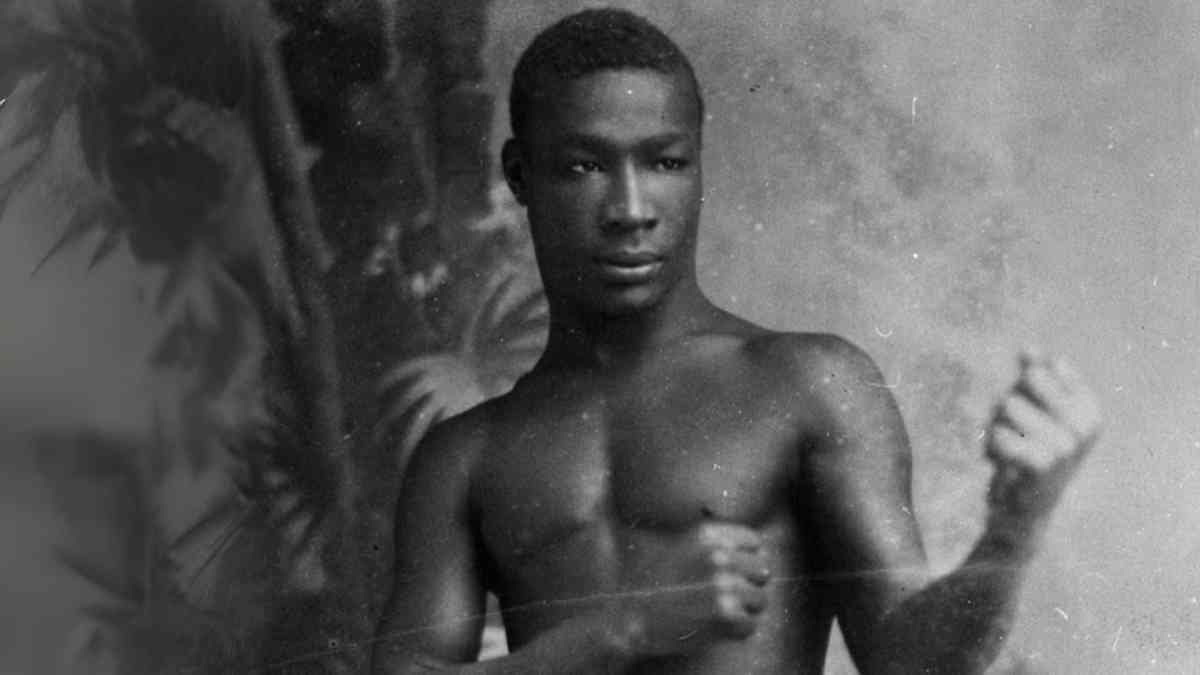Hezekiah Moscow: The Forgotten Boxer Who Fought for Fame in Victorian London

In the crowded streets of Victorian East London, amidst gaslights, cobblestones, and the clang of industry, a man named Hezekiah Moscow carved out a reputation that was as enigmatic as it was remarkable. A Black bare-knuckle boxer, showman, and lion-tamer, his life remains shrouded in mystery—fragments of newspaper clippings, courtroom appearances, and boxing promotions being the only surviving echoes of a man once well known in his time. The tale of Hezekiah Moscow is not just a story of physical strength; it’s a historical window into race, entertainment, and survival in 19th-century Britain.
Who Was Hezekiah Moscow?
Hezekiah Moscow’s origins remain uncertain. Census and marriage records describe him as having been born in the West Indies around 1862, suggesting he may have come to Britain as part of the broader colonial migration, whether by employment, trade, or circumstance. He came into public attention in East London by the early 1880s, primarily through his performances as a pugilist and entertainer.
It’s not clear whether “Hezekiah Moscow” was his birth name or a misheard version of something else—possibly “Mascoe,” as some genealogists speculate. Nonetheless, it is under this name that he entered the public eye and left his curious mark on history.
Rise of “Ching Hook”: A Theatrical Boxer
By May 1882, Hezekiah had taken on the boxing pseudonym “Ching Hook” or “Ching Ghook,” a name that, unfortunately, seems to have been born out of racial caricature. Victorian Londoners, unfamiliar with Black and Asian identities, often collapsed them into simplistic stereotypes, and the name likely originated from one such instance in a Whitechapel pub.
Despite the unfortunate origin, Hezekiah leaned into his role as a boxing showman. In the absence of official boxing commissions or sanctioned bouts, fights often took place in pubs, music halls, or temporary rings. Ching Hook was known for his agility, style, and sharp instincts in the ring. His opponents included both working-class brawlers and seasoned fighters, and while records of wins and losses are scarce, contemporary accounts praised his flair and showmanship.
Life Beyond the Ring: Lion-Taming and Music Halls
Hezekiah Moscow wasn’t confined to boxing alone. He became something of a spectacle performer, engaging in lion-taming at the East London Aquarium. This unusual job led to his most prominent public appearance in 1884, when he was accused of animal cruelty in a high-profile case brought by the RSPCA. The case, sensational at the time, placed Hezekiah before a courtroom audience as he defended his profession and character.
He was ultimately cleared of all charges, but the incident left a deep impression on the public. Here was a Black man in Victorian London, commanding lions in front of white audiences, surviving courtrooms, and drawing crowds in pubs—his life continually defying the restrictive expectations of the era.
Family Life and Disappearance
In 1890, Hezekiah married Mary Ann Maddin in Whitechapel, suggesting an effort toward domestic stability. The couple had a daughter, Eliza, in 1891. The family was recorded in the census, where Hezekiah listed his occupation as a “traveller.” However, the term was often loosely applied and could mean anything from a performer on tour to a salesman or even an itinerant labourer.
Hezekiah continued making boxing appearances until around 1892. Then, abruptly, he vanished from public records. In 1896, Mary Ann posted a missing-person notice that read: “Moscow (Hezekiah), coloured pugilist, known as Ching Ghook…” It remains one of the few direct references to his disappearance.
Despite genealogists and historians combing through archives, no death certificate, burial record, or immigration clue has ever surfaced. Whether he died quietly, left the country, or assumed a new identity remains a mystery. What is certain is that his family stayed behind, and his daughter Eliza grew up without knowing what had become of her father.
A Life Fractured by History
One of the key reasons Hezekiah Moscow’s story resonates today is its fragmented nature. His life is pieced together from rare photographs, box office ads, court documents, and stray mentions in Victorian newspapers. He was both visible and invisible—known by name during his time, but virtually erased from history afterward.
Historian David Olusoga has referred to such lives as “fractured biographies,” particularly common among working-class people of colour in British history. The systems of the time—census taking, death recording, official publications—rarely considered men like Hezekiah worthy of full archival preservation. As such, his disappearance is less surprising than it is indicative of a wider pattern of historical neglect.
Hezekiah in Popular Culture: A Return to Light
Interest in Hezekiah Moscow resurfaced more recently due to popular culture. In the Disney+ series “A Thousand Blows,” a character loosely based on him appears, portrayed as a Jamaican migrant boxer navigating Victorian East London. While the show takes liberties with the timeline and background, it pays homage to the man’s presence in Britain’s boxing underworld and to the struggles of Black men in the era.
Historians were consulted during production, and renewed efforts were made to trace Hezekiah’s real-life trajectory. These efforts led to blog posts, articles, and even podcast features delving into his short but vibrant time in the limelight.
The Racial Landscape of Victorian Britain
To truly understand Hezekiah Moscow’s significance, one must place him within the racial dynamics of Victorian Britain. While not entirely absent, Black Britons were rare enough in 19th-century public life to attract attention—both negative and positive. Black boxers, sailors, and performers existed, but often within narrow stereotypes: exotic, savage, humorous, or physically imposing.
Hezekiah played the role expected of him to some extent—entering the ring as a “coloured pugilist” under an Orientalist nickname. Yet he also defied those expectations by defending animals in court, marrying locally, and raising a family. His life tells a deeper story of resistance and adaptation.
The Historical Importance of Ching Hook
The story of Hezekiah Moscow—or Ching Hook—is not just about one man’s fight for fame. It reflects the story of thousands of people whose lives didn’t fit the Victorian mould. He existed in a society that didn’t know what to make of him: a Black man commanding lions, dancing through boxing rings, adored by some, derided by others.
While it might seem his life ended in obscurity, the truth is that he left behind a powerful legacy: one of presence in the face of invisibility, of voice amid historical silence. In today’s era of rediscovered stories and revised historical narratives, Hezekiah’s tale is not just worth telling—it’s necessary.
Could Hezekiah Moscow Have Survived in Another World?
One can’t help but imagine how Hezekiah’s life might have unfolded had he been born a century later. Would he have been a professional athlete, protected by contracts and publicity teams? Would he have written an autobiography? Would he have been invited on television as a guest of honour or recognised by the state for his contributions to Black British history?
In another era, he may have stood shoulder to shoulder with Muhammad Ali or Lennox Lewis. But even within the confines of his own time, he made something extraordinary out of very little. In the brutal rings of Whitechapel pubs and the animal pits of East London, he rose beyond expectation.
The Legacy He Left Behind
Although he vanished without a trace, the name Hezekiah Moscow still stirs the imagination. Researchers, archivists, and historians continue to search for answers, piecing together scraps that offer glimpses of his former presence.
His story has become a rallying point for discussions on race, class, and lost histories. It’s part of a growing movement to ensure that people from underrepresented backgrounds are no longer left out of the books and classrooms that define British history.
Perhaps the greatest tribute to Hezekiah Moscow is that, despite history’s attempts to forget him, he has become unforgettable.
Conclusion: Reclaiming the Story of Hezekiah Moscow
In retracing the life of Hezekiah Moscow, we find not just a tale of physical contests and entertainment. We find a man who navigated multiple identities in a rigidly defined society, who faced scrutiny from the courts, who loved, lost, and ultimately disappeared without ceremony.
Hezekiah’s life may have faded into shadows for a century, but today he returns, not as a mystery, but as a man who mattered. His story reminds us that the voices of the past—however faint—deserve to be heard, and that history is not complete until every fighter’s name is remembered.



